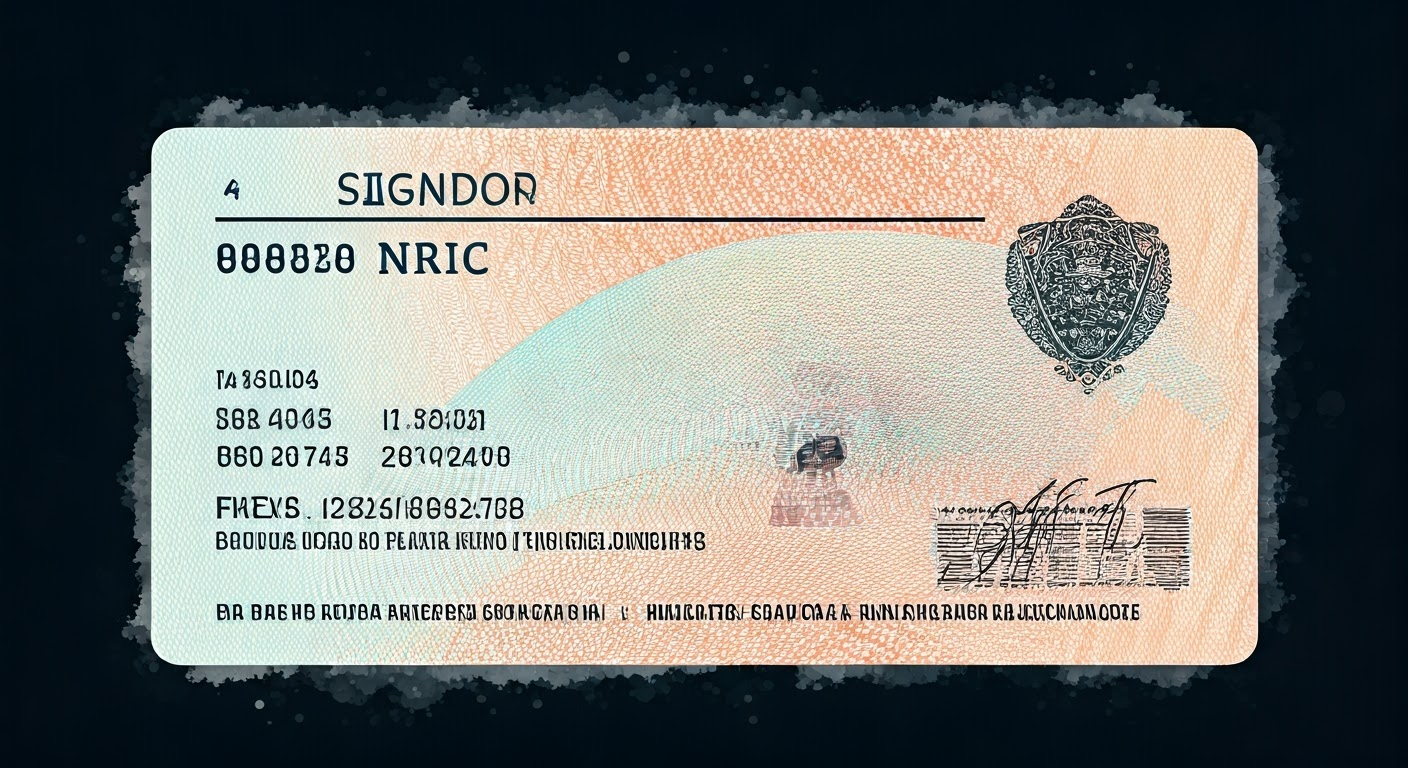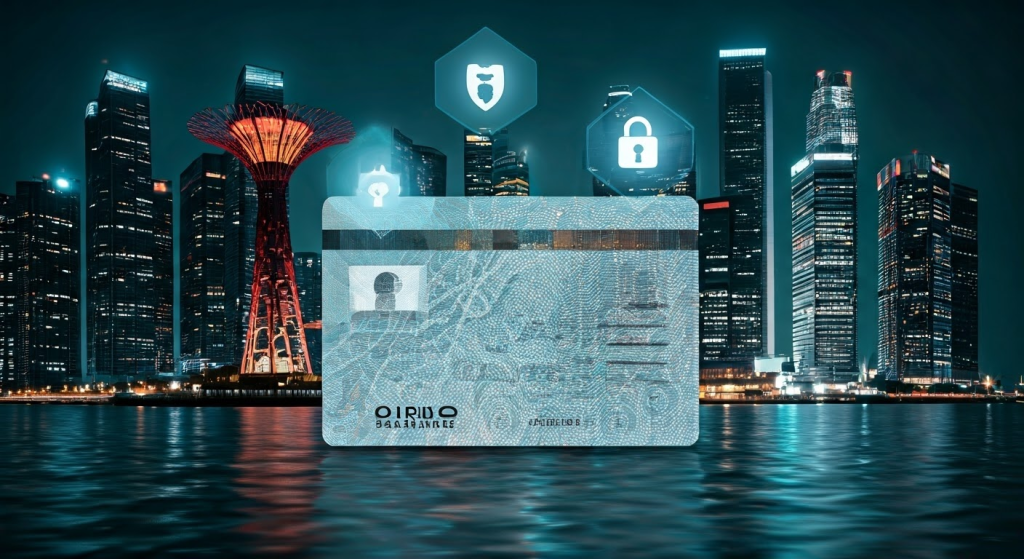
Key Highlights
- The Singapore NRIC is a compulsory identity document for citizens and permanent residents aged 15 and above.
- This identity card features a unique 9-digit alphanumeric identification number, personal details, and security features.
- The NRIC number format reveals information about the holder like their birth year and citizenship status.
- It plays a crucial role in daily life, from opening bank accounts to accessing government services.
- The government has established a robust legal framework concerning NRIC usage, addressing offenses like forgery and ensuring compliance with data protection regulations.
Other Tool : NRIC Generator | NRIC Validator | Bulk NRIC Generator | Bulk NRIC Validator | NRIC Barcode Generator
Introduction
The Singapore government requires all citizens, including those with Singapore citizenship and permanent residents, who are 15 years old or older to have a National Registration Identity Card (NRIC). This card is more than just a photo ID. The NRIC number on it is an important personal identifier. It helps in many daily activities and interactions with government agencies and businesses. In this blog post, we will explain the details of the Singapore NRIC, including its history, how it is structured, what it is used for, and the laws that govern it.
Understanding the Singapore NRIC System
The NRIC system in Singapore helps to register and identify people in the country. It follows the National Registration Act of 1965. This act requires a national registry to be created and gives rules for how to issue and use NRICs.
The Immigration and Checkpoints Authority (ICA) manages the national registry. This authority works under the Ministry of Home Affairs. The NRIC system has changed over the years. It now uses new technologies to improve security. For example, it has switched to polycarbonate cards and added biometric data.
The Historical Evolution of NRIC in Singapore
The first NRIC was created in 1966. This was an important step for having a formal ID system in Singapore. At first, the NRIC featured simple laminated cards. In the 1990s, these cards were replaced with stronger and safer polycarbonate cards, which come in two main colour schemes.
Interestingly, the first NRIC numbers were given to important people in Singapore’s history. For example, the NRIC number S0000002G went to Wee Chong Jin, who was the first Chief Justice of Singapore, while the NRIC S0000001I was issued to Yusof bin Ishak, the first president of Singapore.
Over time, the NRIC has changed to reduce fraud and make it safer. New security features like laser images and biometric data show that the government is always working to keep the NRIC system trustworthy and secure.
Differentiating Between NRIC and Other Forms of Identification
The NRIC is only for Singapore citizens and permanent residents. However, there are other travel document ID forms for foreign nationals. The most common one is the Long Term Pass card. This card is green and made of polycarbonate. It is given to foreigners living in Singapore on long-term passes. The card shows their immigration status and is often needed for different transactions.
For Employment Pass holders, the Ministry of Manpower (MOM) issues a different card. It shows their employment status and includes key details, like their work permit number. Foreigners get a unique Foreign Identification Number (FIN). This number stays the same even if they change pass types.
In short, the ID card given depends on whether the person is a citizen or a resident. Each card has important information about their status in Singapore.
Anatomy of the NRIC
The Singapore NRIC is about the size of a credit card. It contains important information that proves who the holder is and their legal status in the country. A key feature is the color – pink is for Singapore citizens and blue is for permanent residents.
Both sides of the card show important details. The front has personal information and security features. The back includes more information, such as when the card was issued. For permanent residents, it also shows their nationality.
Deciphering the Front Side: What Every Digit Means
The front side of the NRIC has several important parts. You will see the full NRIC number, which is a unique 9-character code, clearly shown. Below this is a non-colour photo of the holder, their name in English, and there might be space for their name in other languages.
An interesting thing about the NRIC number is its design. It shows the holder’s birth year. For people born in 1968 or later, the first two digits of their 7-digit serial number match their birth year. For example, someone born in 1985 would start their serial number with ’85’.
To stop fraud and make sure the card is real, there are several security features. These features include a colour-shifting “REPUBLIC OF SINGAPORE” writing, a smaller photo of the holder that you can see when light shines on it, and a laser-engraved image that changes between the NRIC number and the lion head symbol, depending on the angle you look at it.
Insights into the Rear Side: Significance of the Barcode and Other Details
Flipping the NRIC over shows more important information on the rear side of the card. There is a barcode that includes the NRIC number. This helps different agencies and institutions read and process data quickly. You will also find the holder’s right thumbprint on the back, which adds extra security.
For permanent residents, the back clearly states their ‘Nationality.’ This helps explain that they are not citizens of Singapore. Every NRIC has a ‘Date of Issue,’ which shows when the card was made, and the holder’s registered residential ‘Address.’
These features, required by the National Registration Act, work together to make the NRIC strong and trustworthy for identification and verification.
The NRIC Number Format and Its Unique Structure
The Singaporean NRIC number has nine characters, including both letters and numbers. It is not just a random mix; it has a clear structure. This structure is shown as @xxxxxxx#. It provides important details about the person.
This format makes sure that each NRIC number is unique. It is vital for correctly identifying people and helping with services for citizens and permanent residents.
Breaking Down the Components of an NRIC Number
Let’s break down the structure of the NRIC number:
- @: Represents the individual’s status in Singapore.
- “S” denotes citizens or permanent residents born before 2000.
- “T” represents citizens or permanent residents born in 2000 or later.
- *”F” signifies foreigners issued long-term passes before 2000.
- “G” represents foreigners issued long-term passes between 2000 and 2021.
- *”M” represents foreigners issued long-term passes in 2022 or later.
- xxxxxxx: A seven-digit unique number assigned to the individual. For those born in or after 1968, the first two digits of this serial number indicate their year of birth.
- #: A checksum letter calculated using a specific algorithm based on the preceding characters.
|
Component |
Description |
|
@ |
Status Indicator |
|
xxxxxxx |
7-Digit Unique Serial Number, often including year of birth |
The Significance of Each Segment in the NRIC Number
The first letter (@) is very important. It shows if a person is a citizen or a foreign resident. This helps authorities and organizations quickly figure out what rights and privileges the person has in Singapore.
The seven-digit unique number is also important. For those born after 1968, it includes their year of birth. This makes it easy to see how old someone is. This can be useful in many situations. For people born before 1968, the number shows how early they registered for their NRIC, potentially linking them to the corporate regulatory authority for accurate identification.
Finally, the checksum letter (#) checks the NRIC number’s accuracy. This simple method helps spot mistakes in data entry. It prevents errors and problems that can happen from wrong identification.
Legal Framework Surrounding NRIC
Singapore treats the misuse of NRICs very seriously. The National Registration Act and its related rules create clear laws about how NRICs should be used. They also define different offenses related to the card and its number.
Breaking these laws can lead to penalties, which can include fines or jail time. This shows how much Singapore values protecting personal identities and keeping the NRIC system safe and secure until such identification is established.
Overview of Offences and Penalties Related to Misuse
The National Registration Regulations include many offenses related to a change of address. These offenses are failing to register for an NRIC when necessary, giving a fake address, or wrongfully holding someone else’s card. They also make it illegal to damage or destroy an NRIC.
There are strict penalties for anyone found guilty of these crimes. This can mean fines or even jail time. For example, if someone commits forgery or fraud with an NRIC, they can face big fines and prison sentences of up to 10 years. Such concerns show how serious these actions are taken.
The Personal Data Protection Commission (PDPC) is important in supporting these rules. They give guidance to organizations on how to collect, store, and use NRIC numbers. These guidelines help stop identity theft and make sure personal data protection rules are followed.
Privacy Laws and NRIC: Balancing Utility with Individual Rights
The NRIC number is very helpful, but people worry about privacy risks. They are especially concerned about the widespread use of NRIC numbers due to public concern that sensitive information could be misused. Because of these worries, many people want to limit the collecting and storing of full NRIC numbers when it’s not necessary.
The Personal Data Protection Act (PDPA) is important in addressing these issues. It sets rules for organizations that manage personal data, including NRIC numbers. The PDPA stresses the need for getting permission before collecting data. It also restricts data use to clear and valid reasons and ensures that stored information is secure.
The government is working hard to raise awareness about data protection. They urge organizations to use different ways for identification and verification, implementing legislation that supports these efforts. These initiatives show a strong push to balance the usefulness and privacy of how NRIC numbers are managed, reflecting a significant policy shift in data protection practices.
Practical Uses of the NRIC in Daily Life
The NRIC is very important and used a lot in daily life. It is an essential document for many transactions and interactions in Singapore. It helps to confirm who people are and makes different processes easier, including allowing a person entry to various establishments, sometimes requiring an entry pass.
People need the NRIC for many things. This includes opening a bank account, signing up for government services, renting a property, or going into certain places. This shows how deeply the NRIC is connected to life in Singapore.
From Banking to Healthcare: Where and Why NRIC is Required
Opening a bank account in Singapore requires you to show your NRIC for identity checks. This step is important to keep the banking system safe and stop fraud. Likewise, when you need healthcare services, you usually need to provide your NRIC. This allows doctors to get your medical records and bill you correctly.
The NRIC is also needed for government services, like applying for public housing and accessing benefits, making it a legal requirement. This helps simplify processes and makes sure that only qualified people can use these services. When you apply for jobs, register for schools, or even rent or buy property, you often have to show your NRIC. This makes it a key identification document.
Although showing your NRIC is strict, it highlights Singapore’s focus on keeping order, security, and efficiency in many areas. It has become an essential part of everyday life for everyone living and working in the country.
The Role of NRIC in Government Services and Voting
Government agencies in Singapore use NRICs a lot. NRICs help them access and update individual records easily. This makes it easier for people to interact with government bodies and reduces red tape.
Voting is a basic right for Singaporean citizens. To vote, you must show a valid NRIC at polling stations. This rule, backed by law, makes sure only qualified citizens can vote, which keeps Singapore’s democratic system strong.
The NRIC is also important for law enforcement and security. Police officers can ask to see NRICs to verify identity. This helps in investigations and keeps the public safe.
In conclusion, the NRIC is key to government procedures, voting, and maintaining law and order. It is a crucial part of Singapore’s administration.
Conclusion
Understanding Singapore NRIC numbers helps us see how the identification system works in the country. It includes the history, laws, and how people use it in daily life. Each part is important for making sure things are safe and efficient. By looking at the parts and meaning of the NRIC number, people can understand why it matters for things like government services and voting. There is a need to balance use with personal rights, and strict privacy laws protect the personal information in the NRIC. By learning about the structure and details of NRIC numbers, we can understand how these unique IDs are assigned and what they mean in Singapore society.
Frequently Asked Questions
How do I apply for a replacement NRIC if I lose mine?
If you lose your NRIC, report it right away. Then, apply for a new NRIC at the Immigration and Checkpoints Authority (ICA). You will need a valid passport and some supporting documents to do this.
Can businesses request for my NRIC, and how should they handle it?
Commercial entities can ask for your NRIC for ID purposes. However, the Personal Data Protection Act (PDPA) requires them to manage this sensitive information in a careful way. Businesses should only gather and keep NRIC details when they really need to. They should also consider using masked NRIC numbers to lower risks connected to personal data protection.
How are NRIC numbers assigned to individuals in Singapore?
The Ministry of Home Affairs, especially the ICA, gives out unique NRIC numbers. They take into account things like your citizenship status and year of birth. This is done using a set format to keep the system organized and effective.
What information is encoded in a Singaporean NRIC number?
A Singaporean NRIC number holds special information. This includes the year of birth, citizenship status, and a unique serial ID number. However, it does not include the person’s exact date of birth. Instead, it mainly serves as an identity number in the national registry system, with other heading numbers serving various identification purposes.


